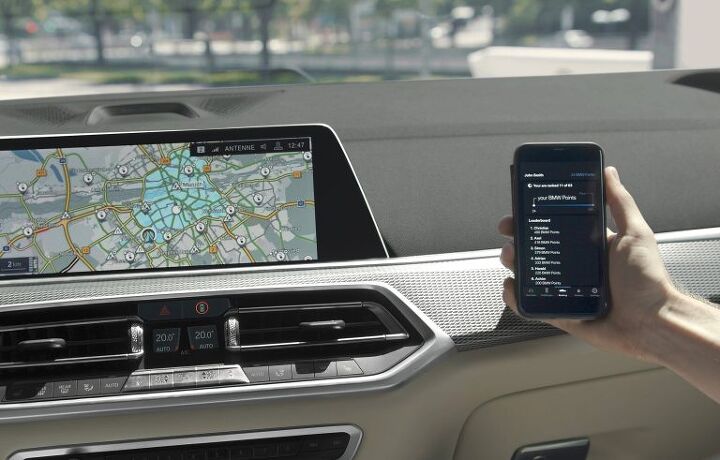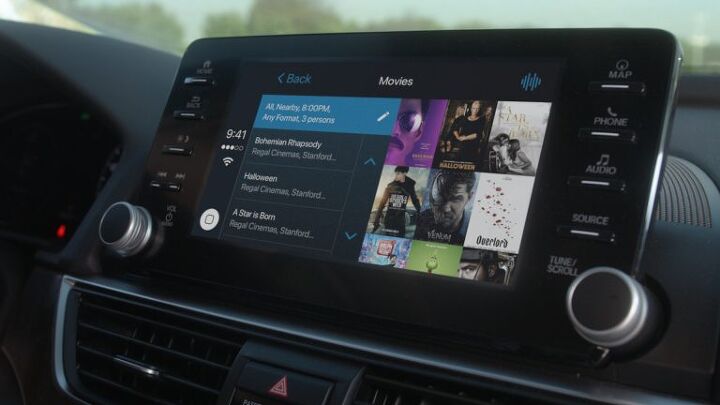#In-carMarketing
BMW's Plug-in Hybrids Will Incorporate Gamification, Automatically Switch to EV Mode in 2020
Next year, BMW plans to equip all plug-in hybrid models with a standard function that automatically switches the automobile into electric mode whenever it enters an area designated for emissions-free driving. While the change is universal, the feature won’t get much action in the United States where government-mandated electrification is less pervasive than a Europe or China.
Still, that’s a sizable chunk of the brand’s global market. Hoping to appeal to it, Bavarian Motor Works went on an electric kick for Tuesday, announcing the electrically powered Motorrad Vision DC Roadster motorbike, Vision M Next Concept, testbed “Power BEV” drive units, upgrades to the BMW Intelligent Personal Assistant, and a bunch of other tech hand picked for the unsettlingly trendy #NEXTGen event.
However, the “eDrive Zone” PHEV geofencing system was one of the few items that has been scheduled for production. Unfortunately, it’s going to incorporate some gamification into the driving experience — making us suspicious of BMW’s ultimate goal.
Honda Dream Drive: In-car Shopping, Marketing, Gamification
Expanding on last year’s concept, Honda is reintroducing “Dream Drive” for this year’s Consumer Electronics Show (CES). Previously a platform intended to provide passengers with augmented and virtual reality experiences, Double D now focuses primarily on in-car purchases. In fact, the service seems identical to General Motors’ Marketplace.
That’s right, Honda is entering the dark realm of in-car consumerism and twisted corporate partnerships.
Safety Advocates Getting Testy Over Automotive Apps, Consumer Data
Automakers began hunting for new revenue streams about two milliseconds after realizing they could put the internet into vehicles. While the earliest endeavors involved ride-sharing applications and new infotainment features, companies are now beginning to see new opportunities via automotive e-commerce, data acquisition, and in-car marketing.
However, the delivery system used for these new sources of revenue pose a legitimate safety concern. Distracted driving is on the rise and shopping while behind the wheel isn’t likely to remedy the situation.
GM Revamps OnStar: Take a Long Look In the Mirror
When General Motors first deployed OnStar, it was a little more than an emergency services hotline. Drivers in need could tap a blue button on their rearview mirror and immediately get in contact with an operator. The system could also do this automatically in the event of a crash. OnStar later introduced anti-theft measures, turn-by-turn navigation, and remote access as part of a subscription plan.
However, with General Motors seeing dollar signs wherever connectivity is involved, the automaker wants to retool the system. OnStar will continue offering existing services, but GM is changing the subscription model and placing a new emphasis on data acquisition. The good news is that the tiered payment model will offer more features starting in May. Unfortunately, some those amenities used to be free and those fed up with companies selling your data or paranoid about Orwellian Big Brother scenarios might be less enthusiastic about the long-term corporate vision.
GM Wants Customers to Pay for Gas Without Leaving the Vehicle
General Motors is updating its on-board digital marketplace to allow customers to purchase fuel without ever having to leave the vehicle. You’ll still have to leave the confines of the vehicle to actually pump the gas, unless you live in New Jersey, but the exchange of money is handled entirely by the world’s first “in-dash fuel payment system.”
What a time to be alive.
The new service is available via the Shell widget, which is already featured on GM’s Marketplace app (providing directions to the nearest Shell station). The corporate collaboration allows respective patrons to select a nearby Shell station, use the map to navigate there, park, select a pump, fill up, and drive away. Payment is automatically charged through Shell’s Fuel Rewards program.




















Recent Comments